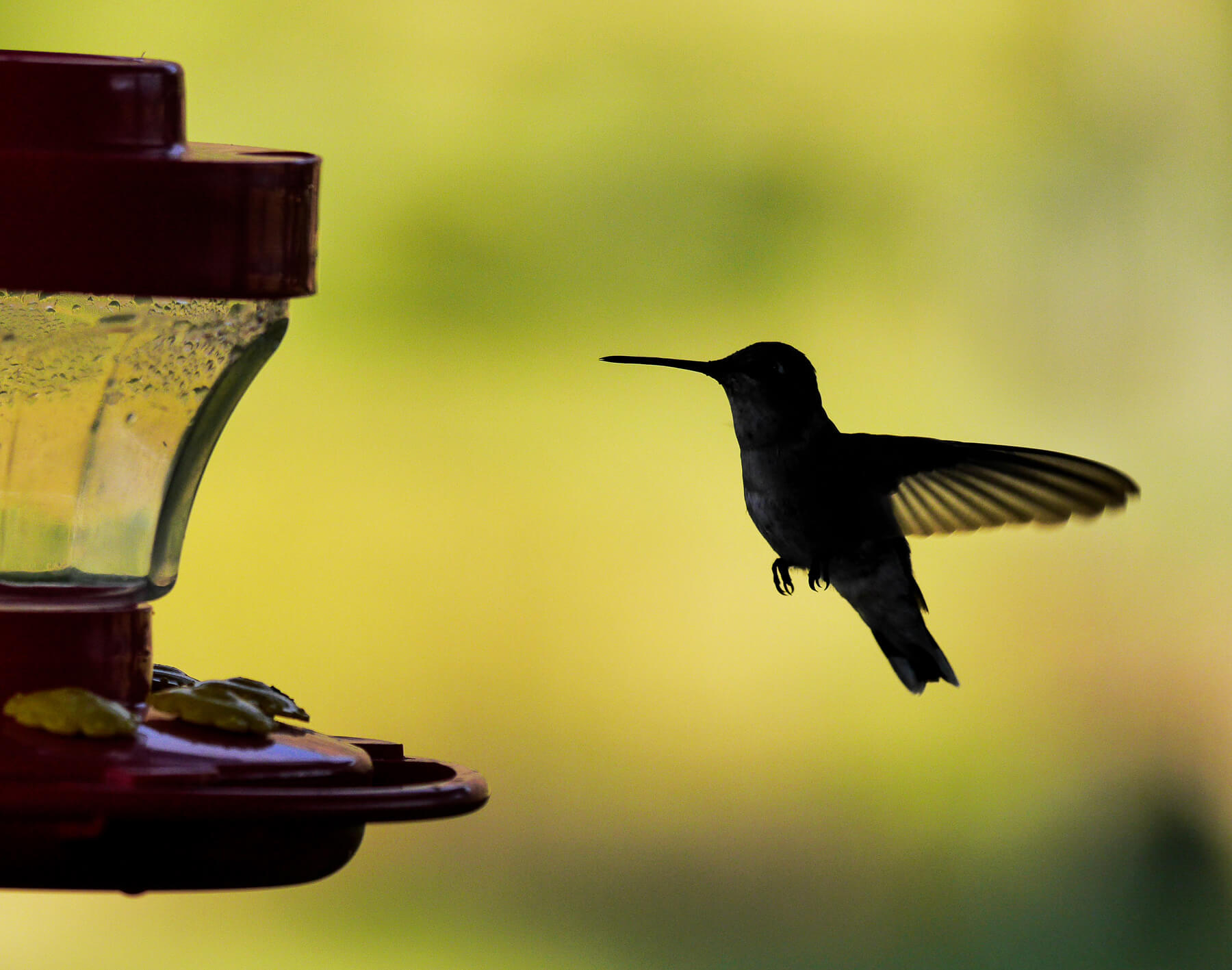Shooting Hummingbirds with a Long Lens
Today’s Post by Barry Staver
I’m so happy to have made the switch from SLRs to mirrorless cameras and these photographs are another concrete example to my justification.
Throughout my career I’ve shot sports, wildlife, and other fast moving subjects with fast, long glass. I consider long glass to be 300mm or longer. In the SLR world these include the 300 and 400 mm f/2.8 and the 600mm f/4 lenses and they are big, cumbersome, heavy, and expensive. Mirrorless l ong glass includes these focal lengths without the size, bulk, and cost but to date most are zooms without the fast minimum aperture of prime glass. I accept this compromise and work around it using higher ISO settings.

When looking through the viewfinder with these telephoto lenses the field of view is quite narrow. A photographer can’t always see the action or activity just a few feet outside this viewpoint. Once again, the moveable and touch activated LCD screen of the mirrorless camera helps me create better images and capture a higher percentage of usable images.
Photo #1 shows a feeder with a hummingbird in mid-air approaching it. On this particular morning there were 4-6 birds that continually flew to it, hovered around it, flew away only to return moments later. They fed on the right side, the left side, directly in front too. My GH4 was mounted on a monopod with the Lumix G Vario 100-300mm F/4.0-5.6 OIS Lens (200-600mm equivalent.) I zoomed into the highest telephoto setting of 600mm and was able to take my eye away from the camera, use the LCD to frame and shoot. It was easy to watch birds approach from either side and slightly turn the camera to that side and shoot.
 Had I been looking through the viewfinder with camera aimed at the left side, I would have missed this photograph taken when the hummer flew in on the right side. It’s also easy to refocus on the subject with the camera in this configuration. Simply move and touch the focus box on the LCD.
Had I been looking through the viewfinder with camera aimed at the left side, I would have missed this photograph taken when the hummer flew in on the right side. It’s also easy to refocus on the subject with the camera in this configuration. Simply move and touch the focus box on the LCD.
Photo #2 shows my favorite image from the shoot. Most traditional hummingbird photos are taken with high-speed flash in order to freeze the motion of fast moving wings. I love the way the bird is motionless but the wings are still rapidly moving, allowing the bird to hover and like the hint of motion and the way the light filters through the thin wings.



